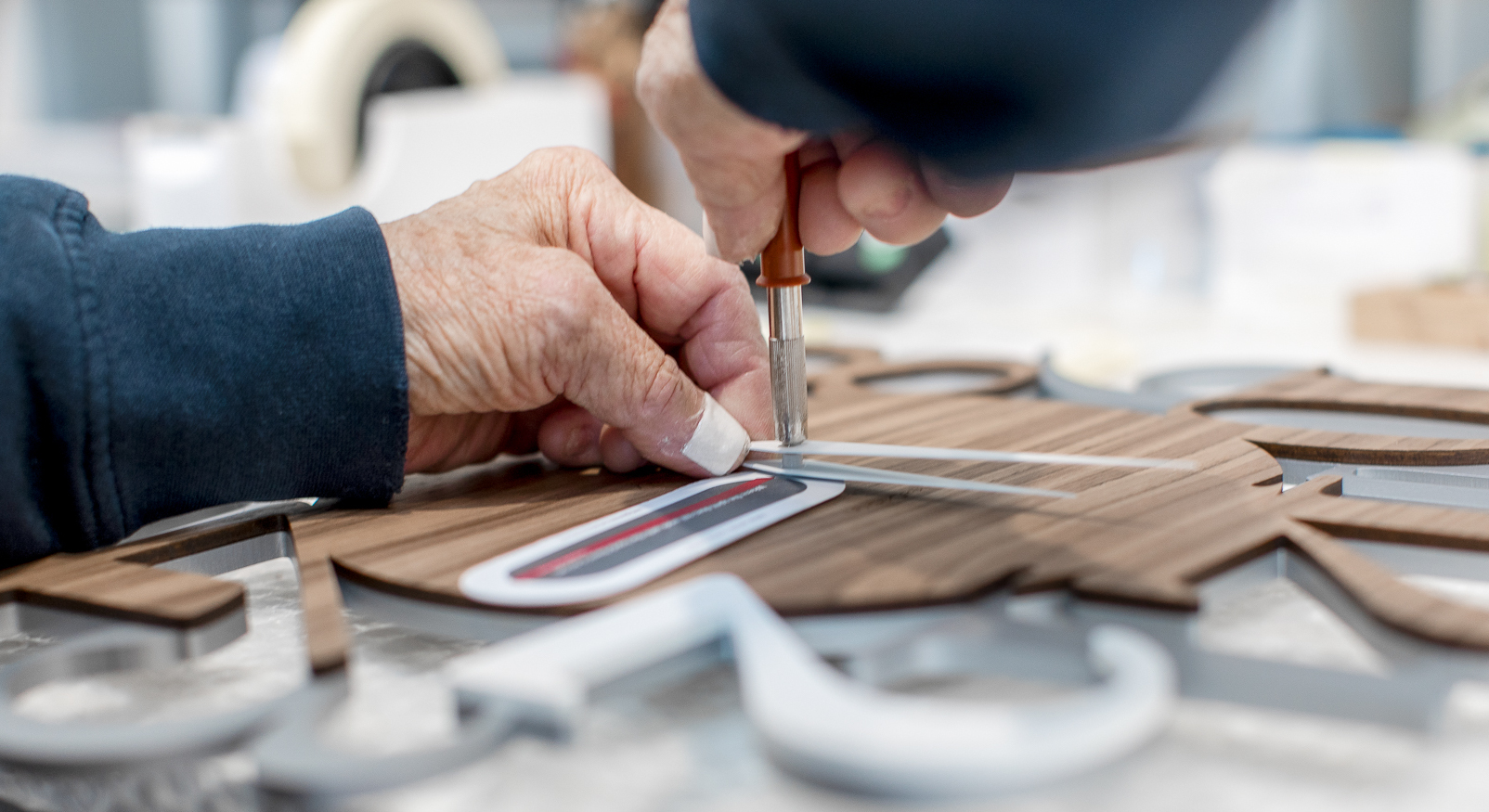The wall clock does not work... what to do?
We have compiled a simple guide to solve solvable problems related to quartz mechanisms for wall clocks. This guide comes from our experience and each of the points in this list has helped us solve dozens of problems with wall clock mechanisms. We therefore urge you to follow it carefully and not to underestimate even the most seemingly trivial checks.
- If the wall clock is new, it may seem trivial, you may get the feeling that it does not work. In fact, the quietness of the mechanism and the absence of the seconds hand can be deceptive; just let a few minutes pass to check its functionality.
- Check that the battery is charged, is correctly positioned in its compartment, respecting the polarities, and that there is no oxide in the metal contacts in the compartment. Any oxide can be removed with a hard-bristled brush and some deoxidising spray for electrical contacts. Alternatively, you can try using a pencil eraser and a cotton ball with a little alcohol. Only if the contacts are badly damaged, e.g. by battery acid spillage, can a very fine piece of sandpaper be used; this operation is not recommended, if not absolutely necessary, because it would also affect the shiny surface finish, making it rough and more vulnerable in the future.

- Check the parallelism of the hands. It may happen that, during transport or when cleaning the dial, the hands move slightly, touching or brushing against each other, which may affect the correct functioning of the watch. After adjusting the hands to the twelve o'clock position with the thumbwheel on the back, simply hold the artefact upright, looking sideways, to check its parallelism. The hands are made of metal, so just gently adjust them with your hand until you find the correct position.
- If the minute hand is not integral with the spindle and moves when touching the hour hand, it is likely that the chrome-plated head (the conical screw that holds the hand in place) has come loose or even slipped off. To tighten it, simply hold the minute hand still and screw it in; if it has come loose, contact our service department for a new one..
- If the minute hand is not integral with the spindle and moves clockwise or counterclockwise, without following the course of the hour hand, the fastening slot is probably damaged. To check this, simply hold the minute hand still, unscrew the chrome-plated head, remove the minute hand and observe the fastening slot, which must have the same shape as the pin where it is housed, i.e. it must not be circular. In this case, contact our service department for a new hand.
- If the minute hand is working and the hour hand is stationary, especially in the case of large watches, there is a high probability that the mechanism is working and the problem is attributable to a lack of grip between the hand and the spindle.
If it is a small or medium-sized lancet, it is sufficient to exert a little pressure on the lancet ring to make it drop a few millimetres down the stem and increase the grip.
If the lancet is very large (about 40-50 cm in length), the following steps should be taken:
- remove the battery and set the time to 12.00
- place the watch on a level surface
- hold the minute hand steady and unscrew the chrome-plated head
- remove the minute hand
- remove the hour hand
- turn the hour hand upside down
- gently tighten the brass-plated sleeve
- set the hour hand back to 12. 00
- check that it is solid, otherwise repeat the operation on the bushing
- insert the minute hand at 12.00, paying attention to the slot
- hold the minute hand in place and screw in the chrome-plated end piece
- hold the watch vertically and check that the hands are parallel
- If you do not fall into any of these cases, you will probably need to replace the mechanism, which is very easy thanks to the kit available by contacting our support service info@calleadesign.it , specifying the model of the article or the warranty reference.















